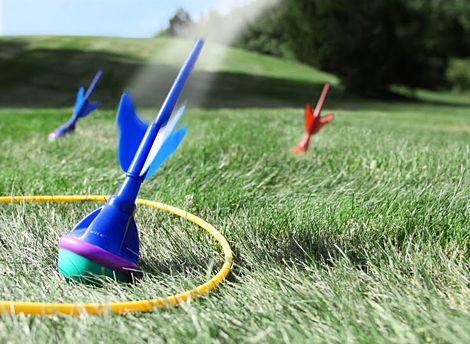Special Considerations In Trauma
Published (updated: ).
Pregnant patients

When trauma strikes a pregnant woman, the potential exists for an unexpected high body count as both the mother and unborn child can die from injuries sustained from the trauma. Normally, pregnant women are transported to the labor and delivery department to see an obstetrician, but in the case of trauma from a significant mechanism of injury, evaluation by the emergency physician is indiciated.
Initial management of the patient is guided by the primary survey. If the patient has no radial pulse or exhibits signs of shock, then treat for shock (oxygen, blanket, elevate feet if possible). Women in their third trimester may not be able to lay in the supine position (the primary position of spinal immobilization) due to supine hypotensive syndrome. Supine hypotensive syndrome is caused by the weight of a third trimester sized fetus laying on the mother’s vena cava (the giant vein that brings blood back to the heart). This pressure on the vena cava reduces blood flow to the heart, which results in decreased blood pressure. Treatment of supine hypotensive syndrome is easy, simply log roll the immobilized patient and transport the patient on their left side. This removes the weight of the fetus from the vena cava.
Pediatric patients

Pediatric patient’s can be difficult to assess. Due to the ability of infants and toddlers to compensate for shock in strange ways, shock can be elusive to medics trying to determine if the patient who appears completely normal is going to suddenly and unexpectedly transcend into decompensated shock then cardiac arrest. The same concern follows medics when evaluating pediatric patients with respiratory distress. The clues are all there if they could see:
- Medics should adjust their view of the mechanism of injury – Falls of greater than twice the height of an infant or toddler present the possibility of cervical spine fracture and head injury. When a adult falls, their center of gravity causes them land on their legs. When an infant or toddler falls, the size and weight of their head often results in them landing head first, leading to head and cervical spine fractures. Medics should suspect traumatic brain injury when assessing victims of abuse. Shaken baby syndrome is a serious brain injury resulting from forcefully shaking an infant or toddler. It’s also known as abusive head trauma, shaken impact syndrome, inflicted head injury or whiplash shaken infant syndrome
- The stages of respiratory distress advance quickly – The musculoskeletal system of the infant or toddler has not developed to the point of being able to compensate for difficulty in breathing. They tend to breathe just well enough to live with little reserve. As such, when they have problems breathing, they will quickly enter into respiratory failure and respiratory compromise. These secondary phases of respiratory distress are evidenced by head bobbing and accessory muscle use (intercostal retraction).
- Infants and toddlers may actually be in shock but look fine – The mechanism of injury is the first clue that there is a serious injury. The appearance and mentation of the infant or toddler can be misleading. Many medics have transported a pediatric patient to the hospital, only to have the patient unexpectedly decompensate while in the back of the ambulance.
- Bradycardia = Hypoxia – The vagus nerve (the nerve that makes people vomit) is alive and well in the infant and toddler. There are multiple nervous system functions provided by the vagus nerve and its related parts. The vagus nerve functions contribute to the autonomic nervous system, which consists of the parasympathetic and sympathetic parts. The nerve is responsible for certain sensory activities and motor information for movement within the body. Essentially, it is part of a circuit that links the neck, heart, lungs, and the abdomen to the brain. The vagus nerve causes the heart rate to decrease. When the baroreceptors in the patient’s aortic arch understand the patient is hypoxic, the vagus nerve tells the body to go into a dormant phase. This is often referred to as the mammalian dive reflex. The mammalian dive reflex results in the body going into a progressive dormant state. The mammalian dive reflex vis a vis the vagus nerve is what makes it possible for 5 year olds to be recovered from a frozen lake.
- Newborns, infants, and toddlers have enormous heads. In order to lay a newborn, infant, or toddler into the supine position, medics must remember to pad under the shoulders. Padding under the shoulders helps keep the neck in a neutral position where (due to the giant head) the neck would most likely flex (chin pointing closer toward the chest). Undue flexion or extension of the neck will result in airway constriction for the newborn, infant, or toddler.
Management is guided by the primary survey. The primary survey may reveal the patient needs aggressive treatment for shock. Spinal immobilization in infants and toddlers requires padding under the shoulders. This measure ensures that their head is not hyper-flexed. Anytime an infant or toddler is laying in supine position, the size of their giant head makes flexion of the neck very likely. Flexion of the neck is a serious concern when the neck should be maintained in a neutral and inline position due to a significant mechanism of injury. Pediatric patients are often transported to pediatric hospitals. Many areas of Georgia do not have access to such facilities, so the medics must sometimes gauge the need for a pediatric hospital with the possibility of requesting a helicopter to transport the patient there. Local protocols should dictate which hospitals pediatric patients are transported to with regard to specific injuries or illnesses.
Elderly patients

People change as they get older. Bones become less dense, adipose tissue thins out leading to paper thin skin. Curvature of the spine may require the medics to pad voided areas if they intend to immobilize the patient. Very often, dentures have to be removed while performing airway maneuvers. Blood volume decreases, respiratory capacity decreases, and cognition decreases. The circulatory system becomes less efficient. Hypertension is common amongst the elderly. An elderly patient in shock may lose their radial pulse but have a systolic blood pressure of 110/mmHg. Medications commonly prescribed to the elderly lead to decreased ability to form blood clots. The brain shrinks leading to higher risk of cerebral bleeding. A loss These changes make it easier for the elderly to become injured and less likely to recover.
Initial management of elderly patients is guided by the primary survey. Airway management is of the highest priority with any patient, however, it is especially important in the elderly patient as decreased cough reflex can lead to a collection of secretions in the oropharynx. A potential airway complication is dentures. When an elderly patient is being ventilated, sometimes the dentures need to be removed because they have broke free of their bonding. It can be very easy for the elderly to break a bone, therefore, stabilizing and splinting are essential skills. Preventing hypothermia by covering with a blanket is every bit as essential as administering oxygen when indicated.
The Elderly With Cognitive Impairments
Anybody could experience an injury from a mechanism of injury, including patient’s with cognitive impairments. Patient’s with cognitive impairments may, due to their impairments, be more likely to be injured than a person without cognitive impairment. Associated with aging are the following cognitive impairments:
- Alzheimer’s disease
- Vascular dementia
- Brian Injury
- Stroke
Not associated with aging are the following condition that result in cognitive impairment:
- Down’s syndrome
- Autistic disorders
Patients with cognitive impairments often suffer sensory loss related to their condition or aging. The decreased neurological function may increase risk of injury and alter the patient’s response to the injury. It may be difficulty to determine if a patient is confused because they have Alzheimer’s disease or a concussion. Variations in strength are seen associated with cognitive impairments. Elderly suffer a loss of muscle mass and tone, decreasing strength.
Determining the location and severity of pain can be challenging with the elderly as their pain tolerance increases with age. For the most part, the elderly are accustomed to pain and quietly endure. Sometimes the medics won’t even know the patient is in pain.
Many injuries are sustained by the elderly and cognitively impaired while they are in the care of family members or nursing home. It is important to completely understand the mechanism of injury when assessing an elderly or cognitively impaired patient as there could be subtle signs of abuse.
